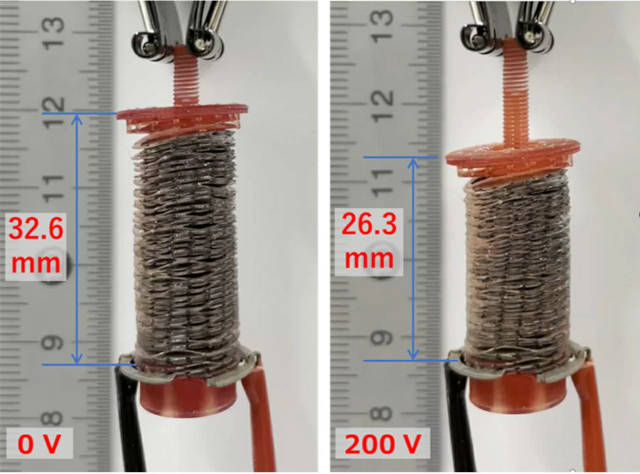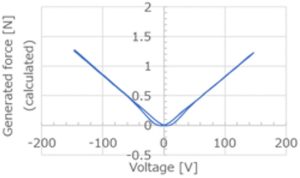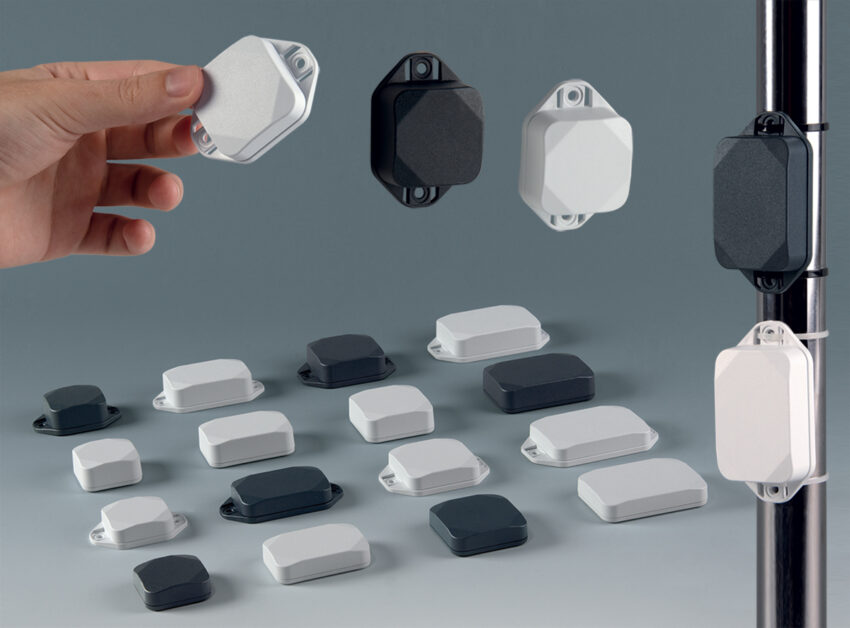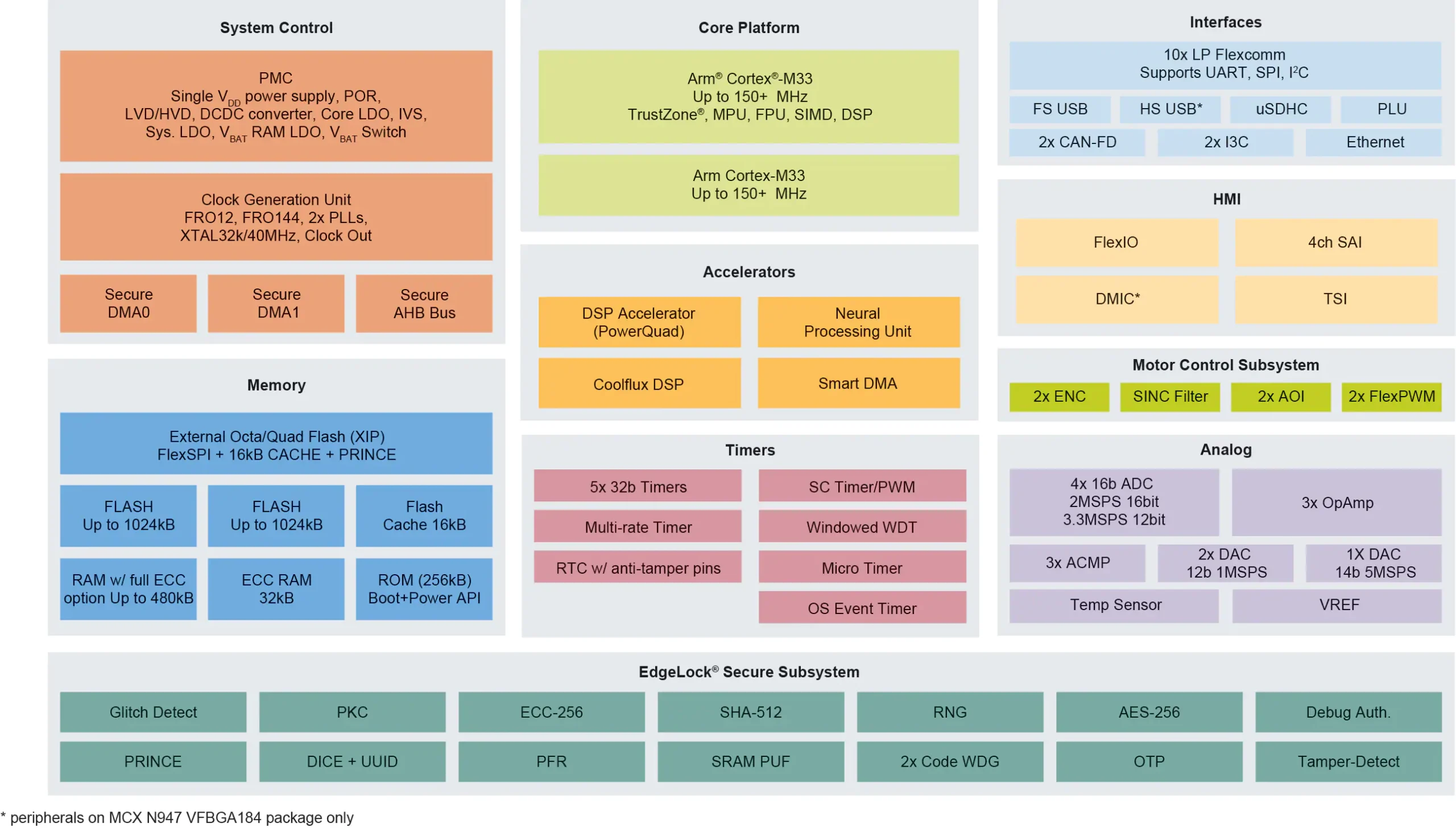
These devices consist of two oppositely charged electrodes that generate a force when there is an electric field between them.
“By altering the shape of their electrodes and filling the gap between them with flexible, soft materials, various configurations for electrostatic actuators have been developed in which the force can emulate that of operating muscles,” according to the Institute, which turned to spontaneously-polarising ferroelectric materials to create more force with less voltage. “Unlike conventional paraelectric materials, ferroelectrics retain their polarisation even after the removal of the electric field, enabling them to maintain a high number of accumulated charges at a low voltage.”
 As well as increased sensitivity, since the polarisation of ferroelectric materials is independent of the voltage, the generated force is linearly proportional to the applied voltage (left).
As well as increased sensitivity, since the polarisation of ferroelectric materials is independent of the voltage, the generated force is linearly proportional to the applied voltage (left).
A special phase of nematic liquid crystal was used as the ferroelectric material – where the long axes of molecules are arranged in parallel lines, but not layers. Their rod-shaped molecular structures give these materials a large dipole moment at around 10Debye (polarisation is high at 5µC/cm2), while their liquid nature suites them to artificial muscles.
The proof-of-concept (see photo) has ferroelectric liquid crystals and a 3d-printed double-helical coil. “When we applied an electric field of 0.25MV/m [=200V], the device contracted by 6.3mm, which is about 19% of its original length,” said team leader Professor Suzushi Nishimura. “Visual observation showed that the device moves when a voltage of 20V is applied. This means that even a dry cell battery can power the present actuator.”
1.3N of force could be generated with a field of 500kV/m – 1,200 times higher than with standard paraelectric materials (dielectric constant = 10) such as insulating oils, according to the Institute.
Tokyo Tech collaborated with ENEOS Corporation. The work is published as ‘Lowering of electrostatic actuator driving voltage and increasing generated force using spontaneous polarization of ferroelectric nematic liquid crystals‘ in Advanced Physics Research.







